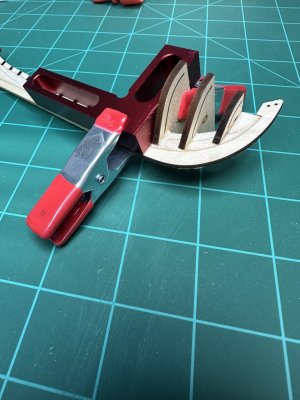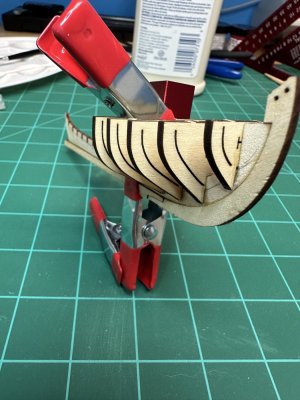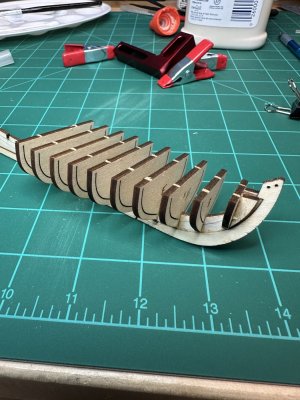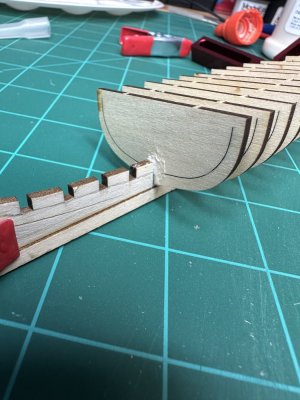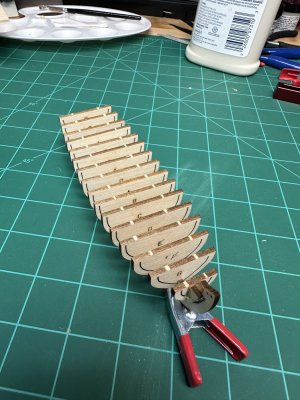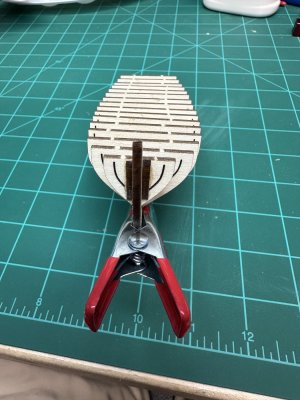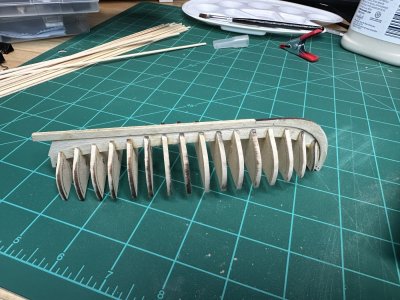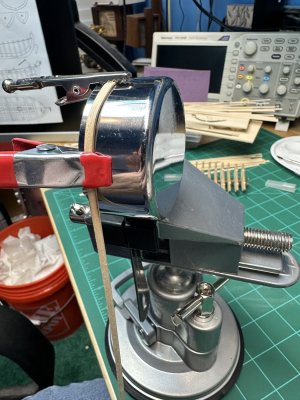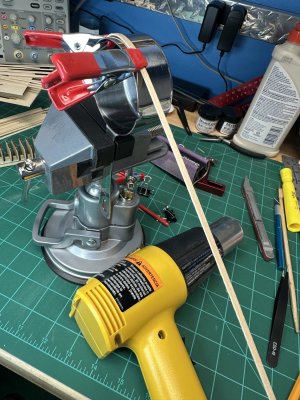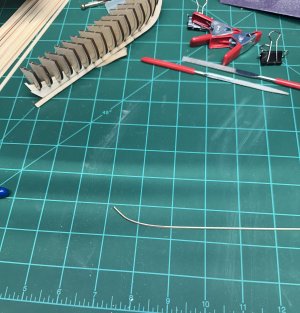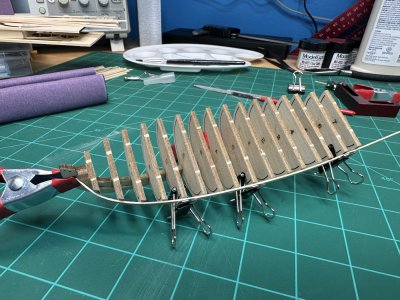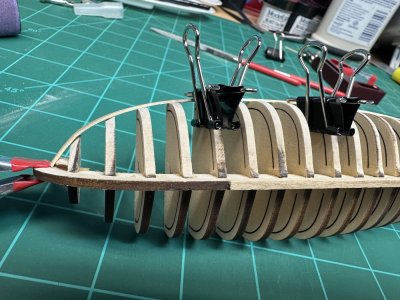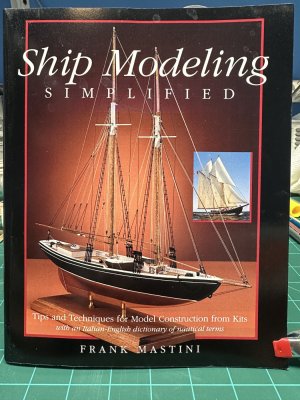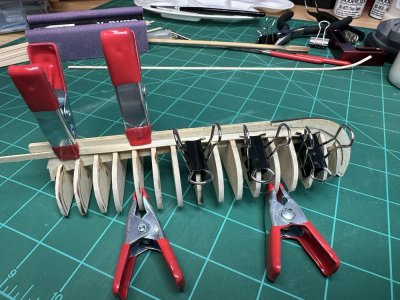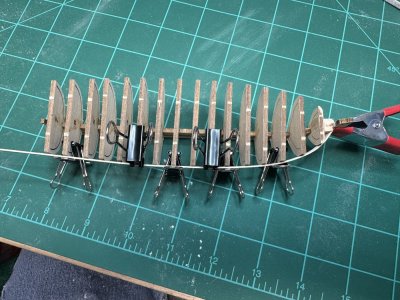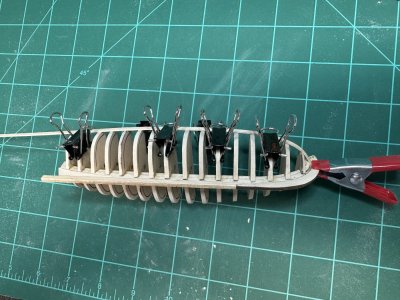Welcome to my build log! This is my first wooden ship kit. I finally cleared my workbench so I can get started.
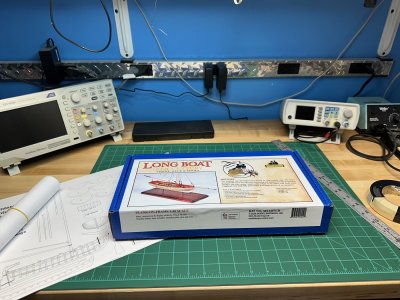
The kit comes with a basic set of tools, paint and glue. I chose to use Elmer’s carpenters glue. I also bought some other tools and supplies.
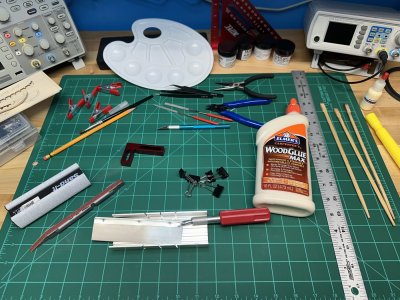
I attached my build plans to my computer monitor which is on an arm mounted to my bench.
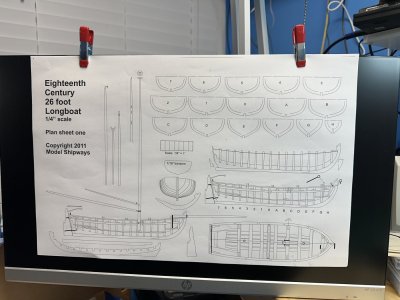
I also bought a notebook to journal my build and keep track of the time I spend on my build.
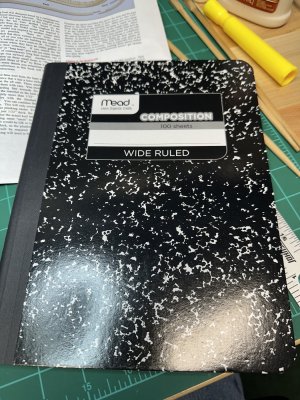
I started off by checking the parts list and making sure everything was in good condition. Next, I started on the keel, I dry fitted everything, created a rabbet and glued it all together.
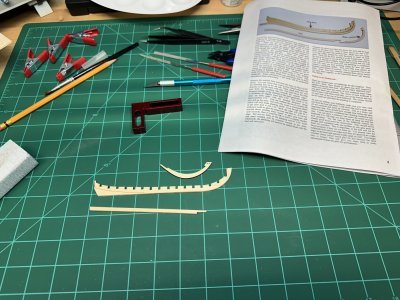
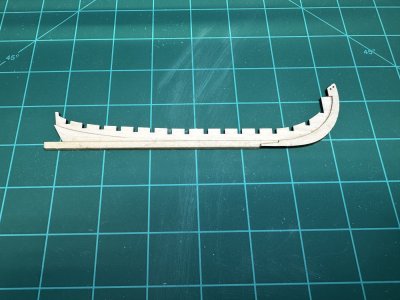
Next, I dry fitted all the bulkheads. I decided to start gluing the bow bulkhead, it attaches to the stem and it was easier to square first.
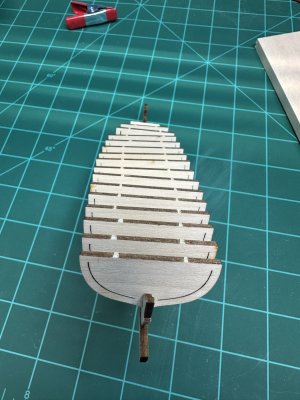
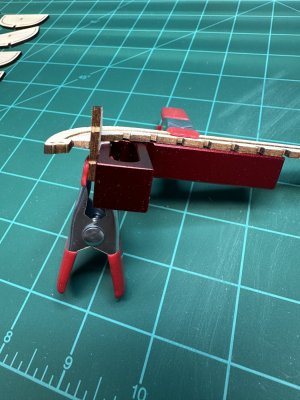
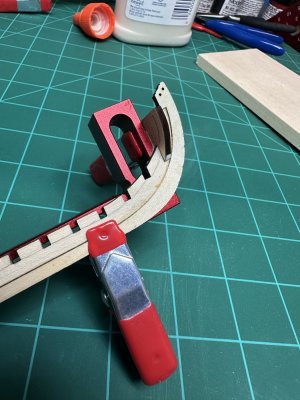
I clamped everything to a small pocket square while the glue sets.
So far I’m off to a good start.

The kit comes with a basic set of tools, paint and glue. I chose to use Elmer’s carpenters glue. I also bought some other tools and supplies.

I attached my build plans to my computer monitor which is on an arm mounted to my bench.

I also bought a notebook to journal my build and keep track of the time I spend on my build.

I started off by checking the parts list and making sure everything was in good condition. Next, I started on the keel, I dry fitted everything, created a rabbet and glued it all together.


Next, I dry fitted all the bulkheads. I decided to start gluing the bow bulkhead, it attaches to the stem and it was easier to square first.



I clamped everything to a small pocket square while the glue sets.
So far I’m off to a good start.




